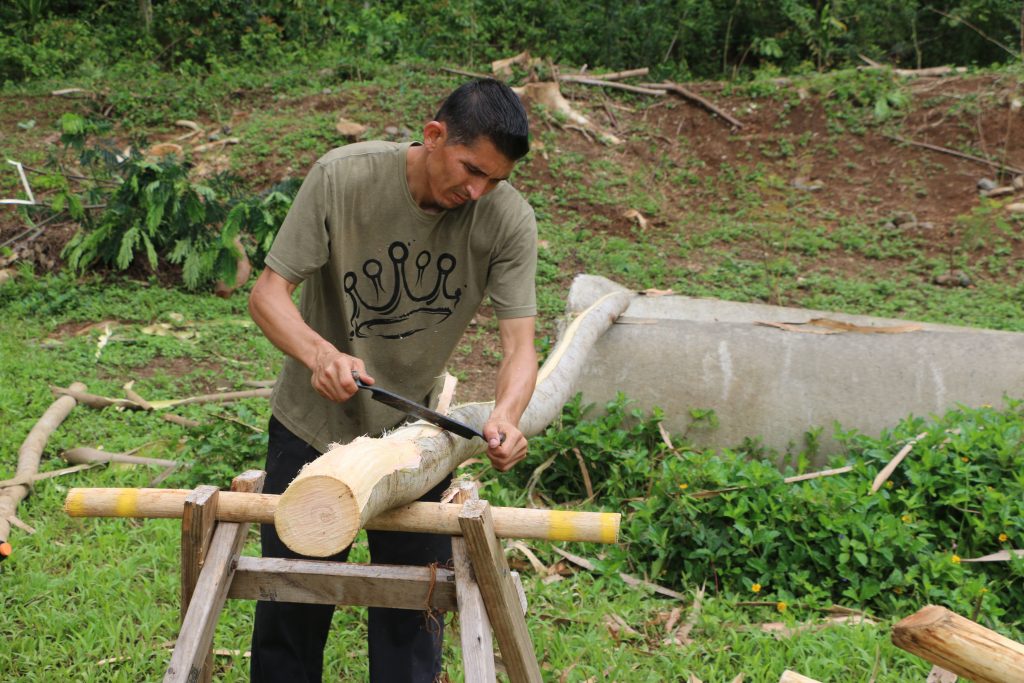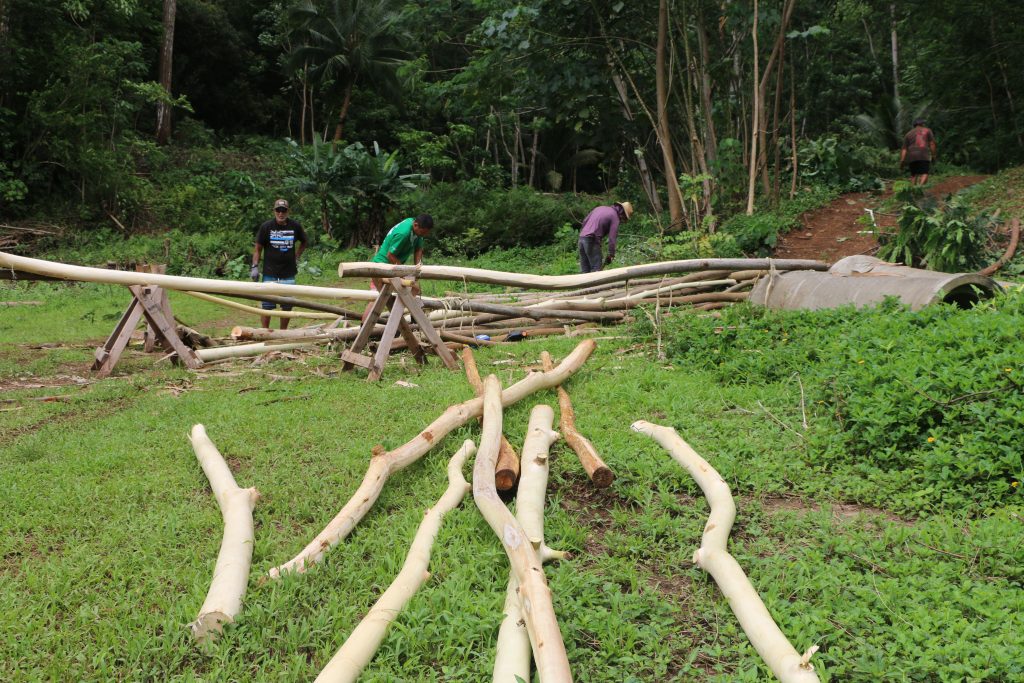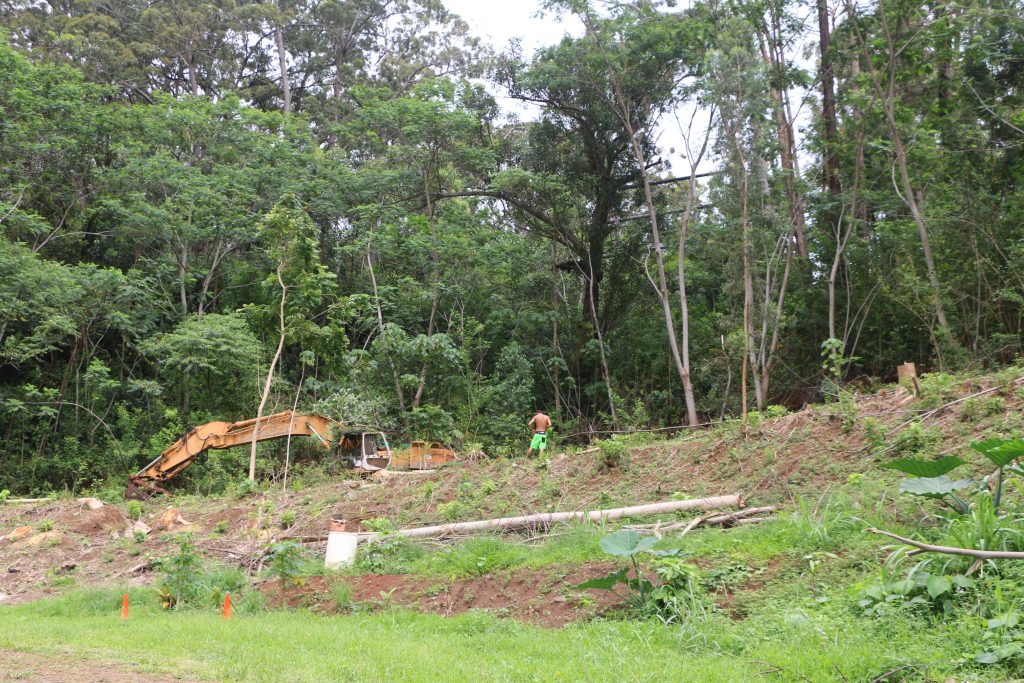1,000 invasive Albizia trees harvested to build FestPAC Hale Village
The DLNR Division of Forestry and Wildlife (DOFAW) helped fell more than 1,000 invasive trees, mostly Albizia, to be used in building 28 hale for the Festival Village as part of the 13th Festival of Pacific Arts & Culture (FestPAC).
The logs were collected from the Nation of Hawaiʻi in Waimānalo, where they were prepped and assembled into hale, then disassembled and put on pallets for transport to the Hawaiʻi Convention Center.
“These lightweight hale structures are specifically designed to be transported and erected quickly for the event,” said Joey Valenti, lead designer and architect, and founder of the Albizia Project in a DLNR news release. “Traditionally, you would use a much more selective species if you’re expecting a structure to last 30 years or so. In this case, they’re only going to be up for 10 days.”
With a small window of time to harvest and build, Valenti said DOFAW provided crucial assistance. “They brought in all the manpower we needed to execute in a couple of weeks, rather than months. That allowed us to do this with the timeframe that we had.”
In clearing large swaths of overgrown land, crews enabled the Nation of Hawai‘i to restore ancient footpaths and loʻi that had long been concealed. “The work that we’re doing is not new for the Hawaiians, it’s something that they’ve been working toward. I think this project really amplifies and accelerates the process,” said Valenti. “I see from them, not only the impact that it’s having on the ʻāina, but also on their own pride in their historic connection to this type of work and bringing that knowledge back to the forefront.”
The crew will have only two days to assemble all 28 hale. Architects Hawaiʻi Limited designed the Festival Village and created the plans for the prefabricated hale that can be assembled in under one hour apiece. Even under deadline pressure, Valenti says the project has lasting cultural significance for all involved.
“Using Hawaiʻi as the base for this, the hale signifies the cultural relationship of the community, of the village. The Hawaiians that are bringing back that community, and being the ones to put their hands on this and actually build the structures I think, speaks volumes to the impact this is having.”


















